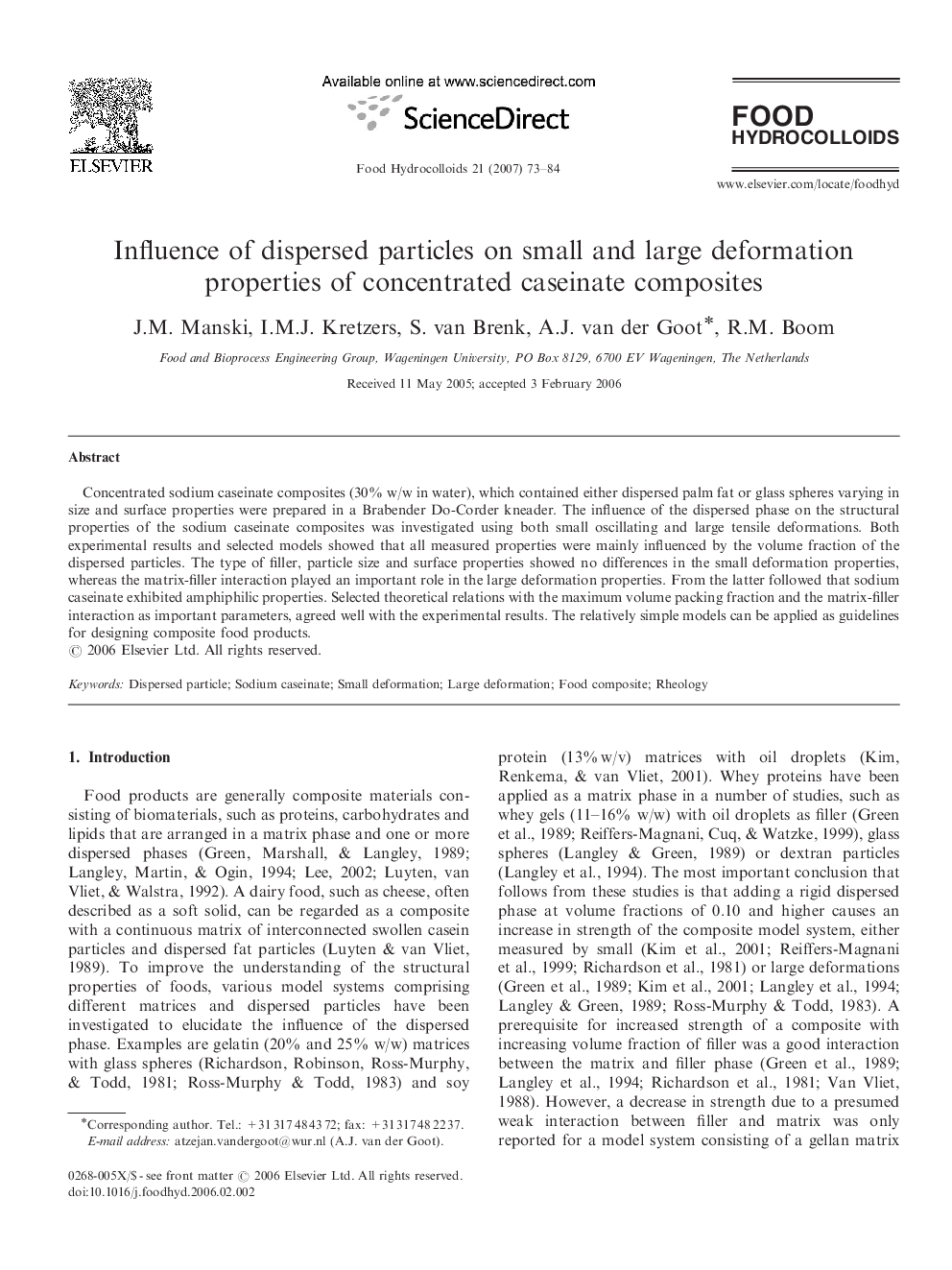| Article ID | Journal | Published Year | Pages | File Type |
|---|---|---|---|---|
| 605992 | Food Hydrocolloids | 2007 | 12 Pages |
Concentrated sodium caseinate composites (30% w/w in water), which contained either dispersed palm fat or glass spheres varying in size and surface properties were prepared in a Brabender Do-Corder kneader. The influence of the dispersed phase on the structural properties of the sodium caseinate composites was investigated using both small oscillating and large tensile deformations. Both experimental results and selected models showed that all measured properties were mainly influenced by the volume fraction of the dispersed particles. The type of filler, particle size and surface properties showed no differences in the small deformation properties, whereas the matrix-filler interaction played an important role in the large deformation properties. From the latter followed that sodium caseinate exhibited amphiphilic properties. Selected theoretical relations with the maximum volume packing fraction and the matrix-filler interaction as important parameters, agreed well with the experimental results. The relatively simple models can be applied as guidelines for designing composite food products.
